Designing The Cluster
Hi. My name is Pavel, I'm the co-creator and Art Director of Scavenger Land (SL). SL is a space western pvp mobile shooter built by a small team of 5 engineers and designers. In this article, I’d like to give you a small glimpse into our design process and show you how we’re creating the world our game is set in.
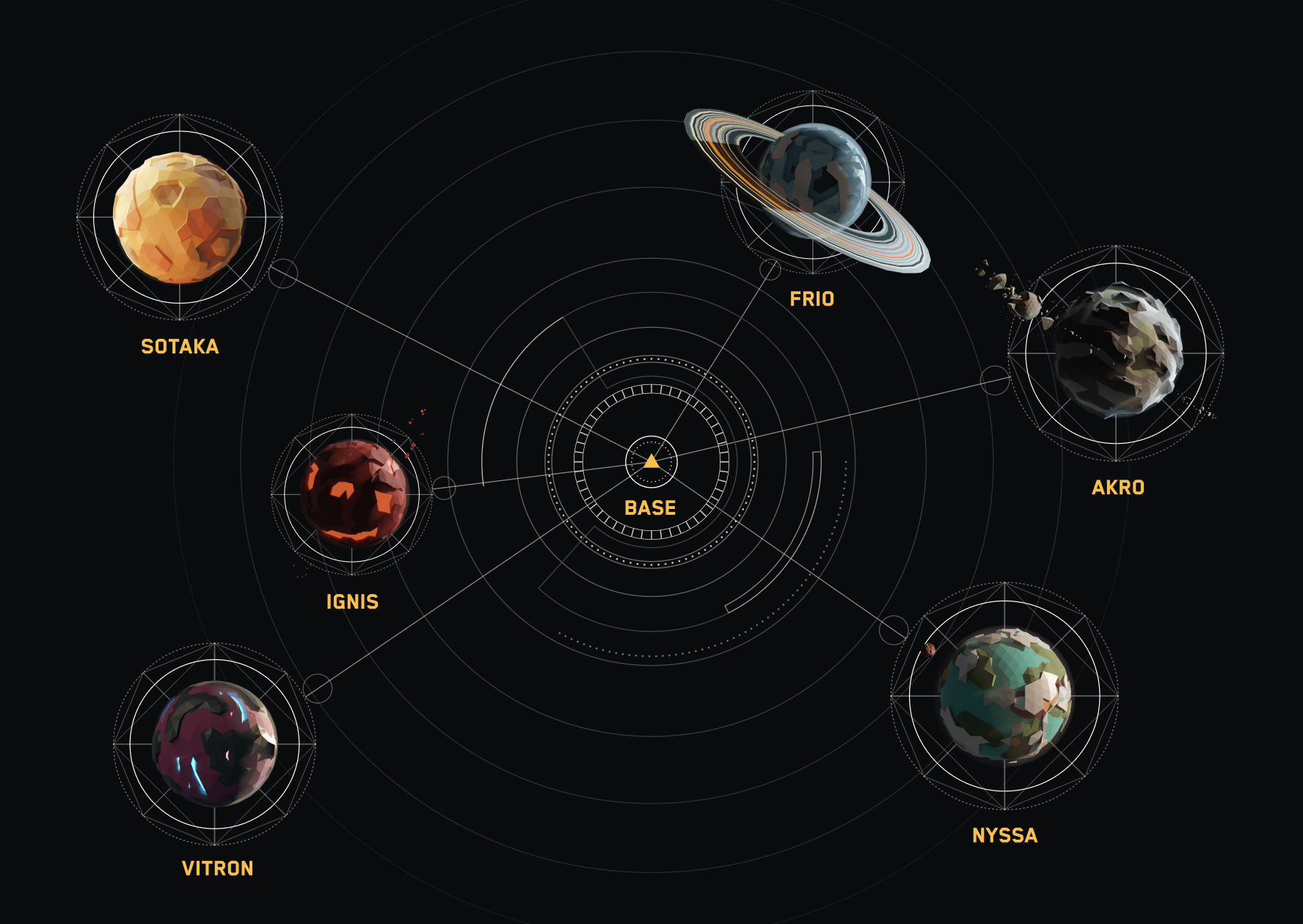
Because SL is our very first game (we have a background in sw engineering), our development process is heavily based on trial and error and we are learning as we go. Sometimes this leads to decisions based on assumptions rather than experience, sometimes we have to rely on intuition, sometimes we are not as fast as we would like to be… but we’re confident that our stylization is heading in the right direction.
Currently, our design team consists of Honza — responsible for environment and weapon design, Petr — taking care of characters and VFX, and myself — trying to figure out how to put it all together into one working piece. With this small team, we’re able to maintain the efficiency that is necessary for fast iterations of new ideas.
In the following lines, I’ll break down how I started from a blank sheet of paper and how we got to the point of having a few graybox prototypes, high-fidelity prototypes and 3 maps. This article is definitely not some blueprint on how to build a game world; view it more as the diary of first-time game designers.
Step One: Lore
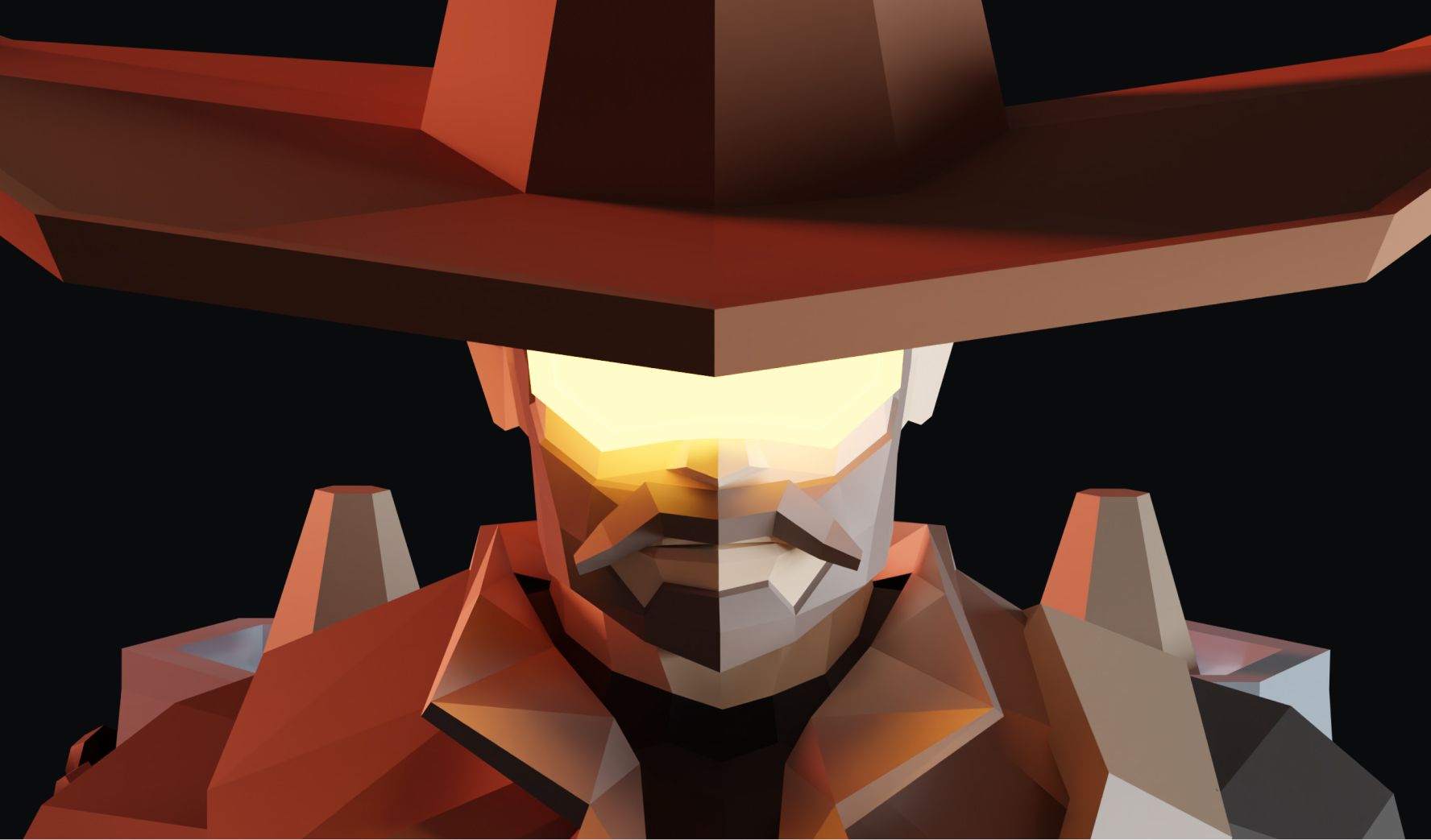
After our second co-founder Martin and I settled on the space western topic and low-poly aesthetics, I knew I needed at least a short, general background story to start designing. As I’ve never prepared something like that before, I simply turned to my favorite sci-fi movies, games and book (not books).
I’m a big fan of EckhartsLadder — an awesome YouTube channel about Star Wars and Halo lore. This channel helped me gain a sense of world-building, especially in the Star Wars universe. Other very useful channels are Spacedock and hoojiwana, which provide analyses of sci-fi spaceships and technology. Big thanks to them for their awesome work.
I’m not a huge bookworm, but I really enjoyed reading “Foundation” by Isaac Assimov about the waning days of a fictional Galactic Empire. Awesome world-building there. As you can see, I’m a space nerd — so any form of sci-fi or content from people like Neil DeGrasse Tyson and Carl Sagan, all the way to videos by Kurzgesagt, is just gold to me.
This mash of sci-fi stuff in my head became a cornerstone of our lore’s development. Thanks to it all, I wrote a few bullet points that would define our universe.
The Scavenger Land world should:
-
offer a variety of different worlds (for different maps)
-
be rooted in believable science fiction (no magic)
-
have a short back story that we can base characters on
-
serve as a building block for the story’s future expansion
-
be original without trying to reinvent the wheel
The Cluster
The first lines I wrote were generic descriptions of the universe and its timeline. I set the world in an unspecified globular star cluster that is simply called The Cluster. It was once dominated by an organization called The Coalition. The Coalition was founded with the purpose to explore The Cluster and to maintain one central government during the colonization of new star systems. Eventually, the expansion of The Coalition became unsustainable, and more and more star systems started to rebel. This led to wars over the remote territories, and the entire civilization fell into decay. And that’s the time and place SL is set in.
I wrote a few paragraphs about different factions, overall history and the current circumstances within the Cluster. These few paragraphs were enough for us to create basic guidelines for the whole world-building process.
Step Two: Mood Boards
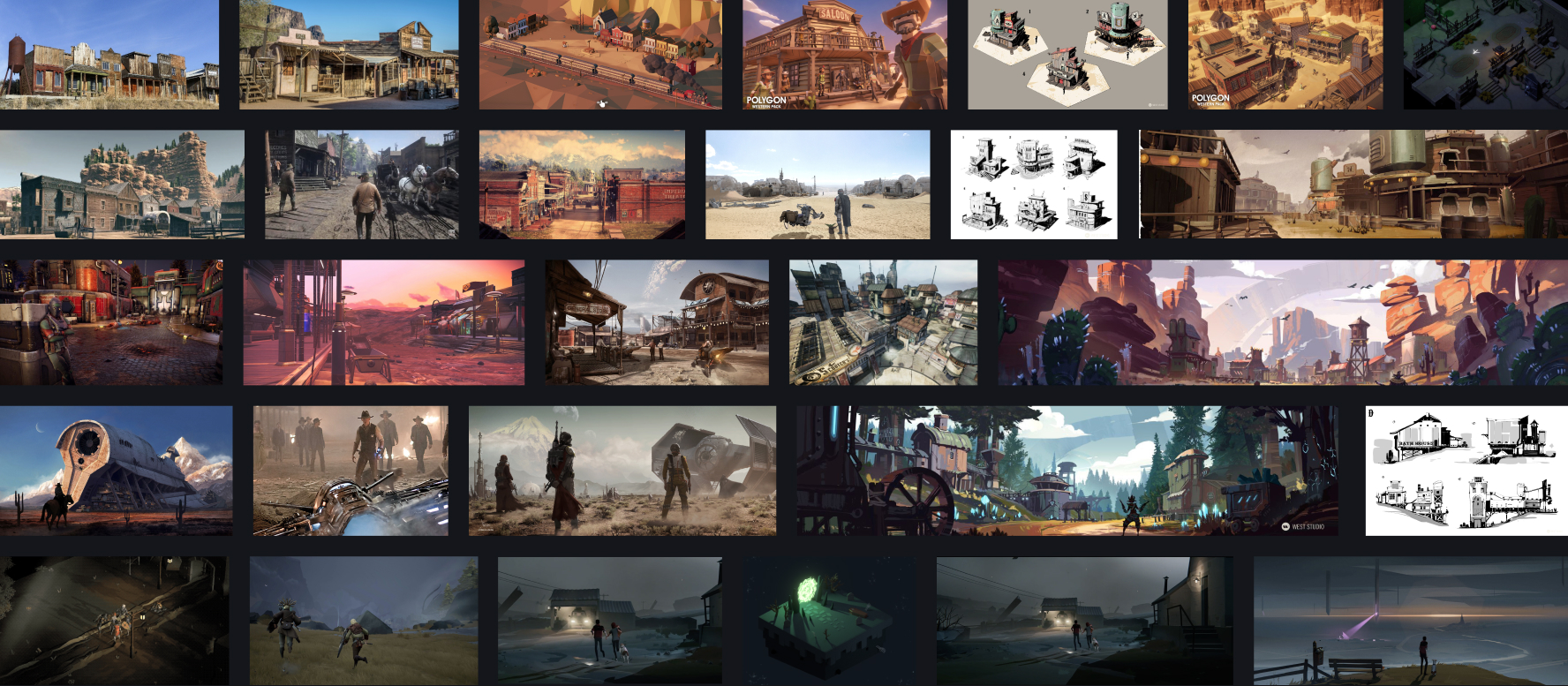
One of the most powerful tools for us is mood boards. They are an excellent, simple way to lay out the overall tone for characters, clothes, weapons, environments… everything.
When Honza, Petr and I discuss ideas for anything new, we always use our mood boards to kick off the conversation. We utilize mostly external references at the beginning of the process and then, slowly, add our own original concept art to the mix.
For our first map, we chose the cliché arid wasteland — a good stepping stone for the space western topic as well as a feasibility study for us. “If we can make this work, we’re on the right path.”
I read a few lines on Wikipedia about the American frontier, period weapons, buildings, towns, etc. The next step was looking through games and movies created around the wild west, as well as diving into sci-fi topics. We studied everything from unrealized concepts and low-poly Unity asset creators to triple-A games like Red Dead Redemption. Finally, we put it all on the mood board and started to specify what direction we’d like to take.
Step Three: Planets and Moons
We decided that we’ll start with 6 different maps in 6 different worlds. These maps had to be unique in style so that the players could experience the vastness of our universe. I went back to lore and started snowballing more content into the basic story about The Cluster.
First, I created a planet called Prima and made it the starting point for civilization and The Coalition. The Desert Planet came next, and I then added various planets and one moon to the “nearby” star systems. Each planet received a short description that consisted of the planet's characteristics, origin story and present state.
You can read the description of Sotaka, the Desert Planet, here: https://scavenger-land.gitbook.io/sotaka/
Before we started working on maps, each planet already had its own:
-
origin story
-
characteristics description
-
present state description
-
low-poly 3D model
-
concept art for the environment
-
concept art for the character within the environment
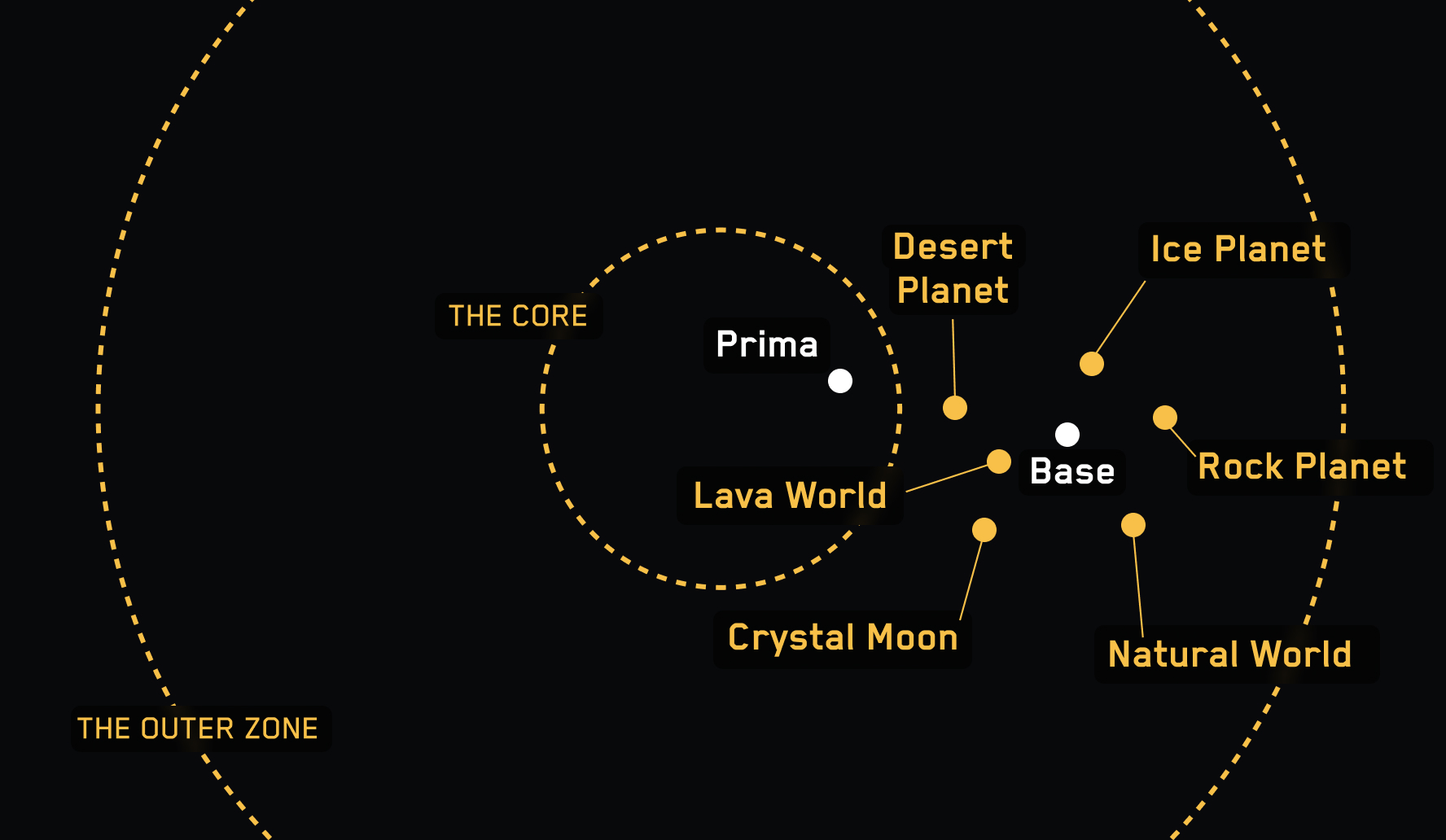
We also had to have a rough idea of the scale and location of each planet, so we made this map — which fit our lore and made some sense in the context of our sci-fi space navigation.
Honza then created a set of concept art for each planet based on the map and descriptions:
Planet Names
After we had all the basics set, we were ready to start designing the maps themselves. However, we were still missing the planet names. We decided to turn to our community on Twitter and asked them to name the planets. We were positively surprised with the response — each planet received at least 30 name suggestions. (Big thank you to our followers!) Once we picked the names, we were prepared for the final step.
Step Four: Maps
The last and most important step is the map design. It’s the part that currently takes up a big chunk of our time. We are simultaneously making 3D models for each world and testing the layouts in graybox prototypes. We’ve already doubled the size of the play area based on playtesting and are making a lot of frequent changes. Thus we are focusing more on the overall look and feel of the surroundings and designing map elements and layouts that are easily adjustable and scalable.
The combination of our lore, mood boards and concept art gives us the means to clearly communicate the art direction, helping us maintain a unified look whenever we create a new map.
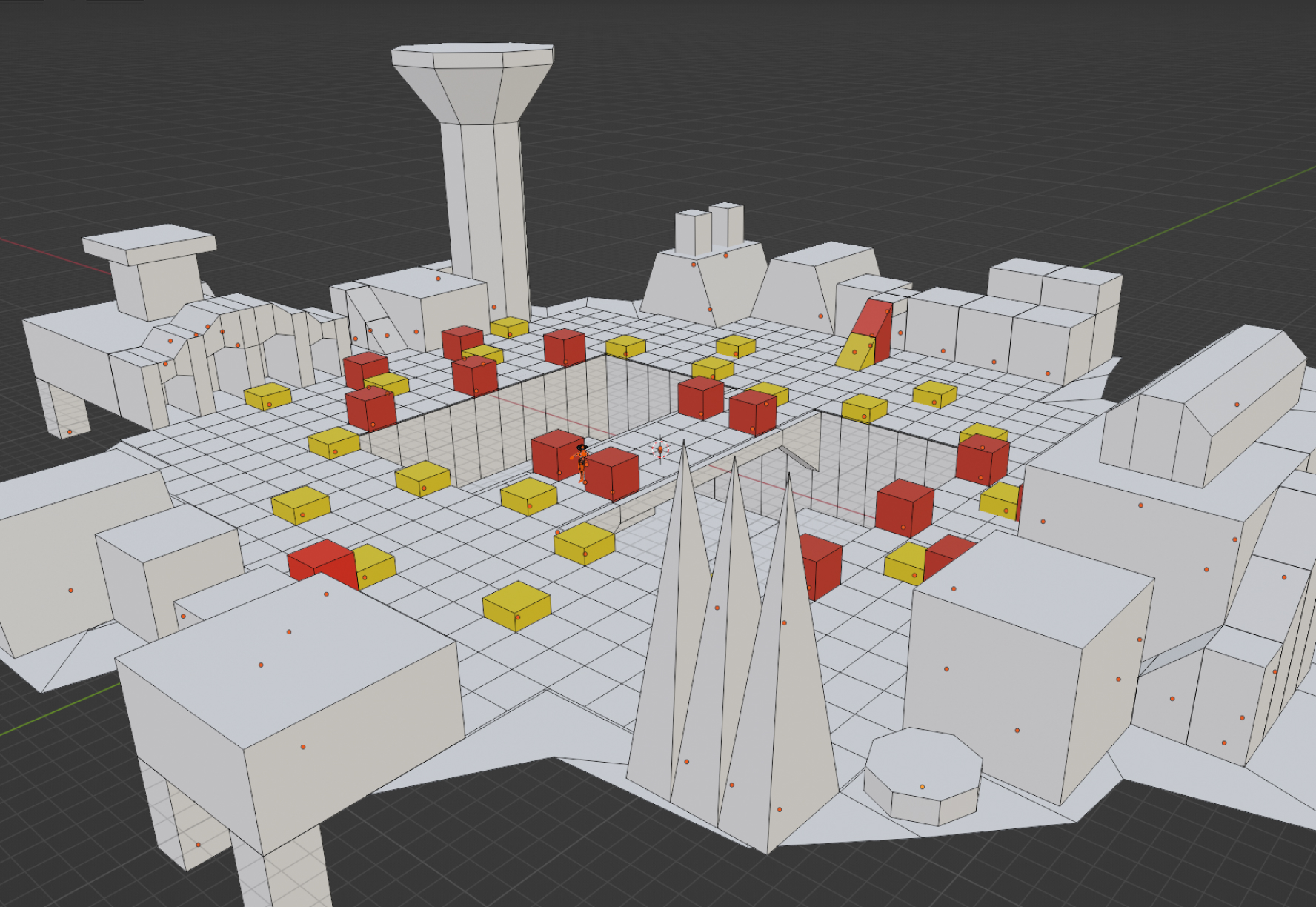
When we decide on a new map, Honza starts with a basic grid-based layout. This layout establishes the first constraints for the map, though we know they might change in size in the future. He then defines the basic topography of the whole area. We mostly discuss the level of detail for the nearby objects and features only because more distant elements are later converted to skybox and sprites to save poly count. So far, we’re at around 50-70k vertices per map.
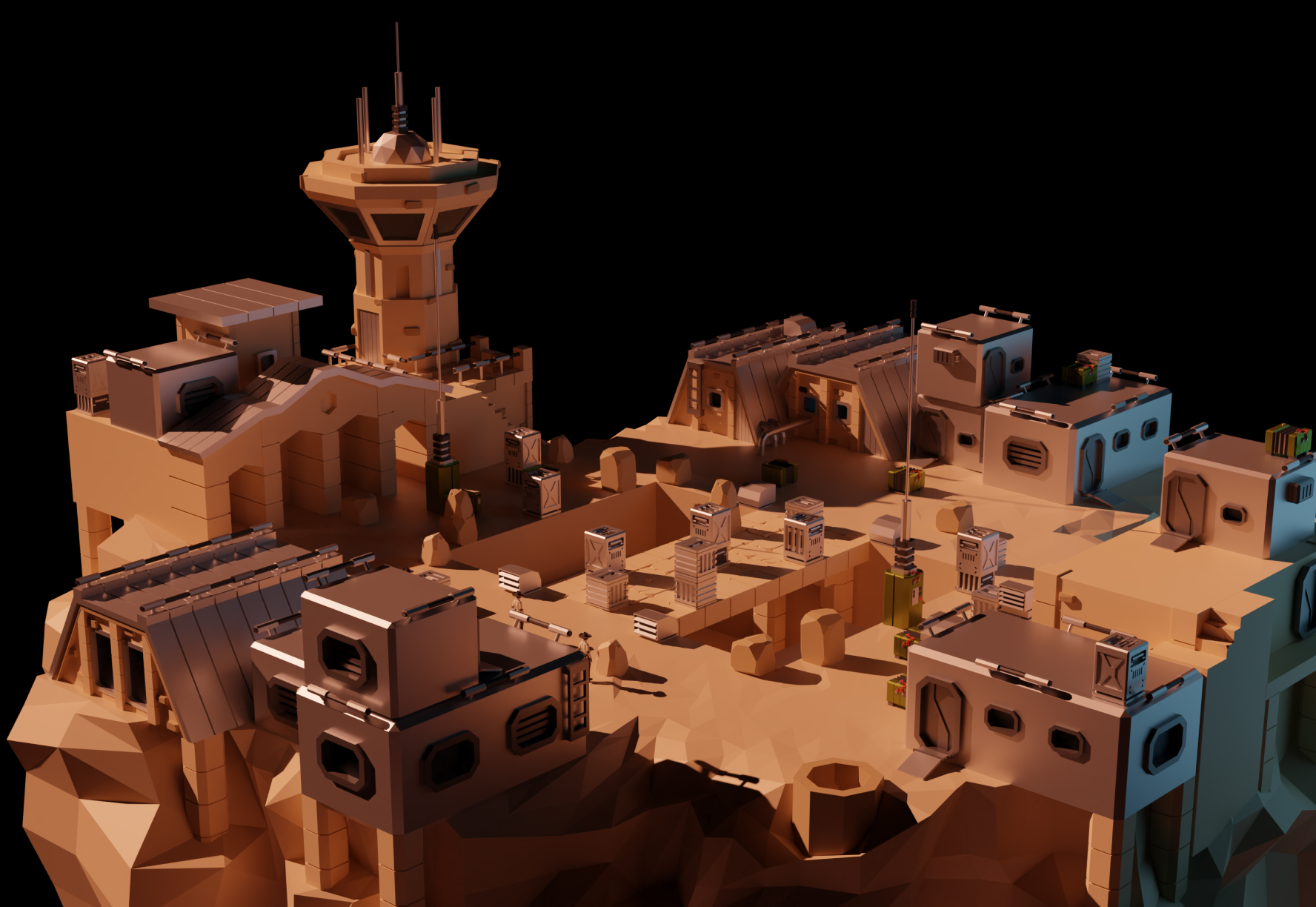
After we agree on a few polished Blender renders, we move to Unity. Honza exports most of the static elements that are not part of the main play area as one .fbx file. We aim to limit the draw calls to as few as possible by merging the objects into one.
Even though we already have light settings defined in the Blender, we still have to redo it from scratch in Unity. We are baking basically all the lighting that is static to textures and are mostly left with only real-time lights on the characters.
Once everything is in place in Unity, I play with post-processing and materials. Tonemapping, bloom and color adjustments together with a few material adjustments can do wonders. The map transforms into a whole new level of look and feel.
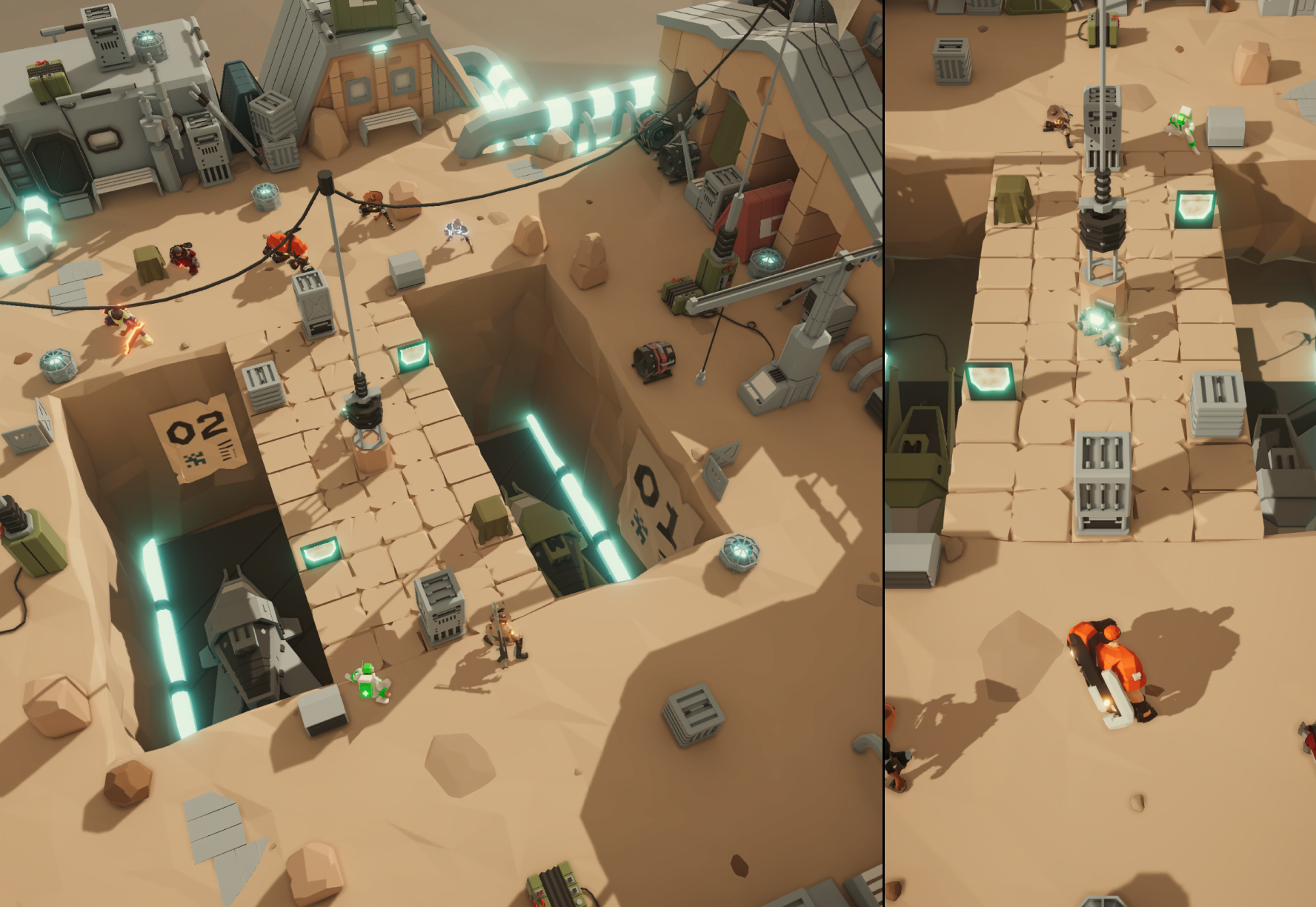
After we are finished with these adjustments, we start adding dynamic objects like spaceships, characters and other playable elements. But more on that in future articles…
If you are interested in Scavenger Land, please pre-register for early access on our homepage and follow us on Twitter. Thank you very much for reading.